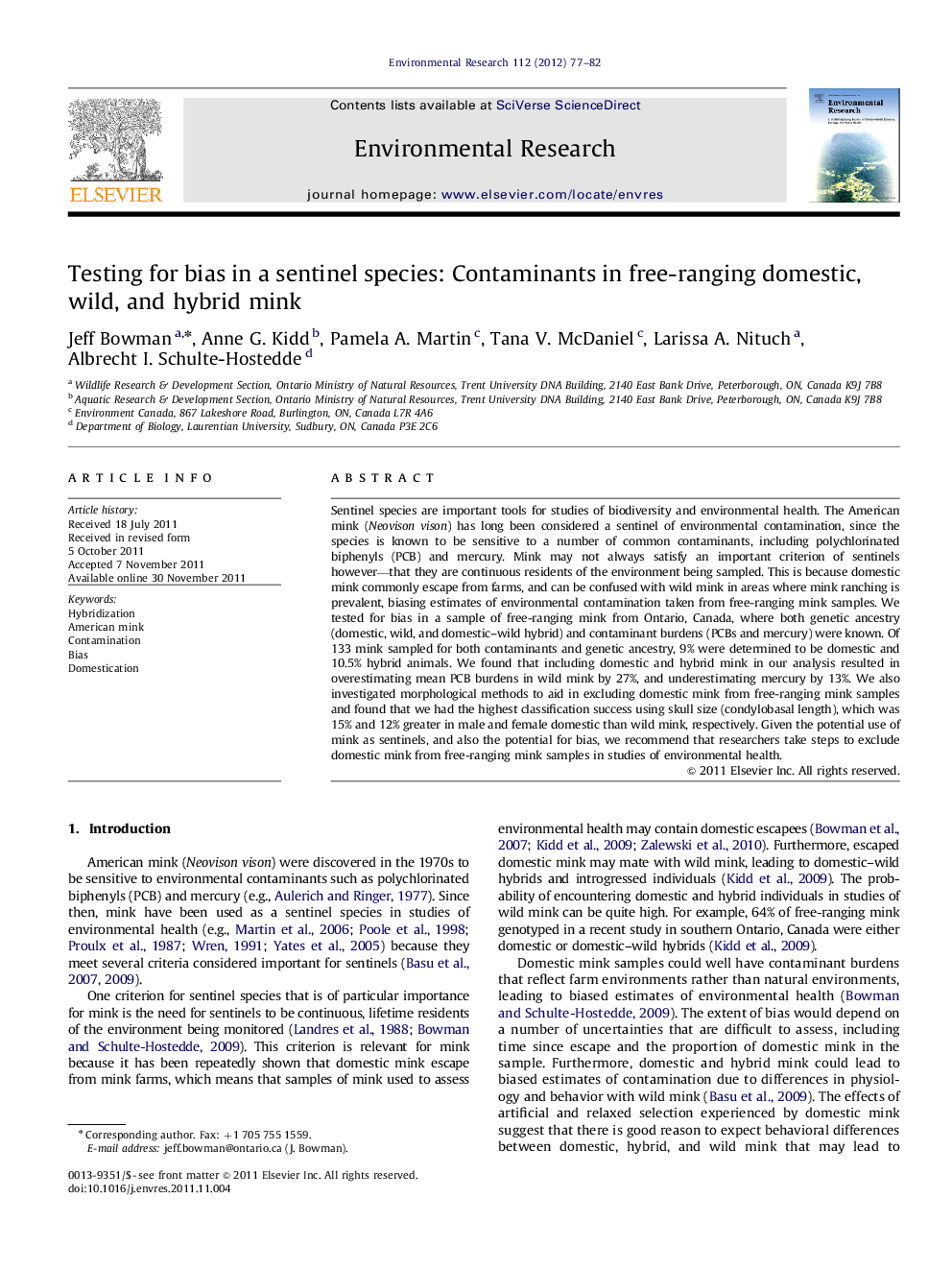| کد مقاله | کد نشریه | سال انتشار | مقاله انگلیسی | نسخه تمام متن |
|---|---|---|---|---|
| 4470147 | 1622589 | 2012 | 6 صفحه PDF | دانلود رایگان |

Sentinel species are important tools for studies of biodiversity and environmental health. The American mink (Neovison vison) has long been considered a sentinel of environmental contamination, since the species is known to be sensitive to a number of common contaminants, including polychlorinated biphenyls (PCB) and mercury. Mink may not always satisfy an important criterion of sentinels however—that they are continuous residents of the environment being sampled. This is because domestic mink commonly escape from farms, and can be confused with wild mink in areas where mink ranching is prevalent, biasing estimates of environmental contamination taken from free-ranging mink samples. We tested for bias in a sample of free-ranging mink from Ontario, Canada, where both genetic ancestry (domestic, wild, and domestic–wild hybrid) and contaminant burdens (PCBs and mercury) were known. Of 133 mink sampled for both contaminants and genetic ancestry, 9% were determined to be domestic and 10.5% hybrid animals. We found that including domestic and hybrid mink in our analysis resulted in overestimating mean PCB burdens in wild mink by 27%, and underestimating mercury by 13%. We also investigated morphological methods to aid in excluding domestic mink from free-ranging mink samples and found that we had the highest classification success using skull size (condylobasal length), which was 15% and 12% greater in male and female domestic than wild mink, respectively. Given the potential use of mink as sentinels, and also the potential for bias, we recommend that researchers take steps to exclude domestic mink from free-ranging mink samples in studies of environmental health.
► American mink are often used as sentinels of environmental health.
► Bias may result however, by inclusion of escaped domestic mink in samples.
► Including mink of known domestic ancestry resulted in overestimating PCB burden by 27%.
► Including domestic mink in samples resulted in underestimating mercury burden by 13%.
► Skull morphology was effective for differentating domestic from wild mink.
Journal: Environmental Research - Volume 112, January 2012, Pages 77–82